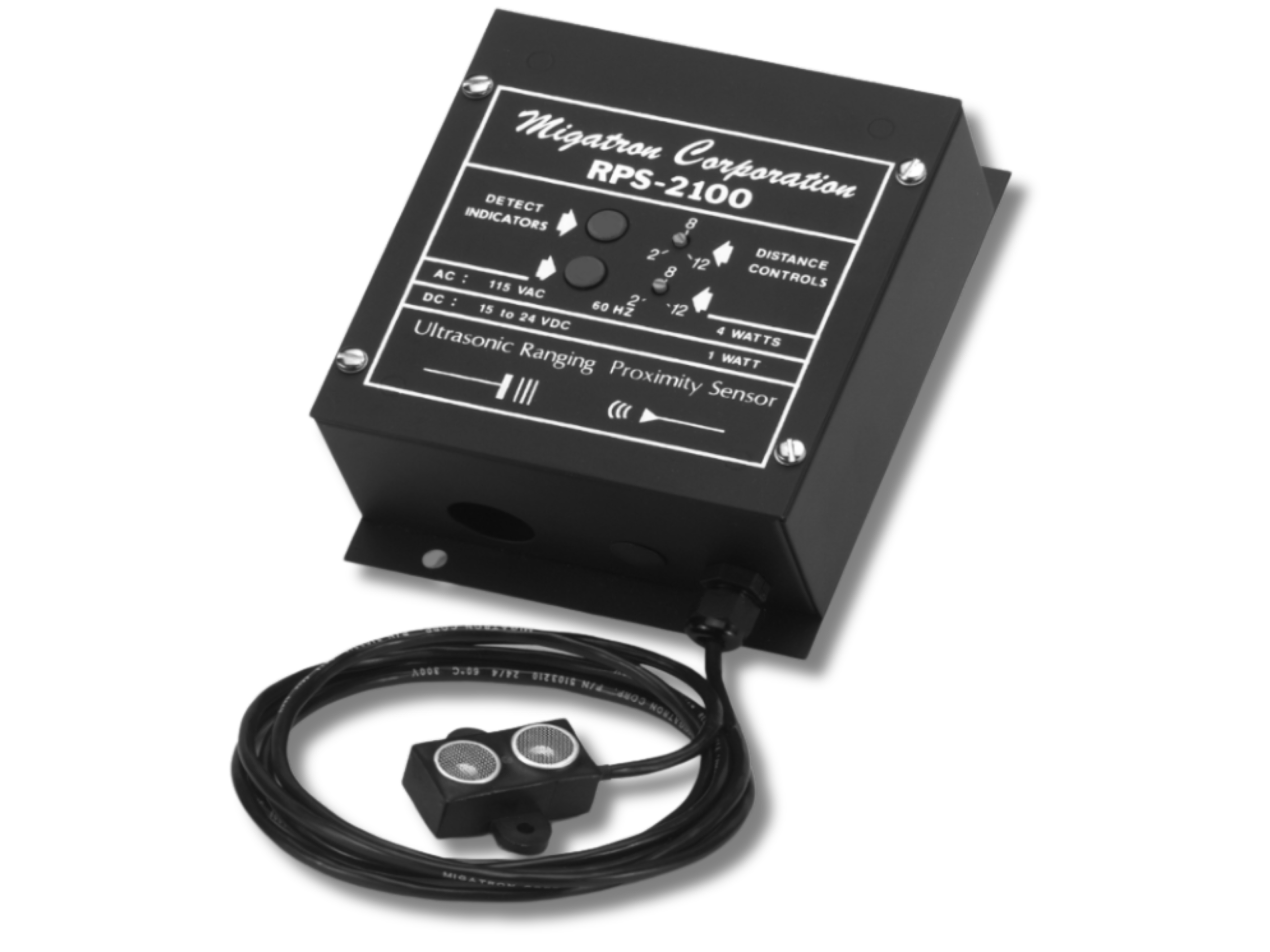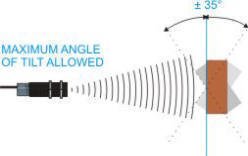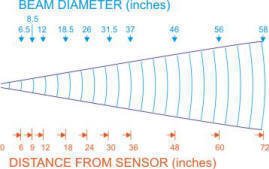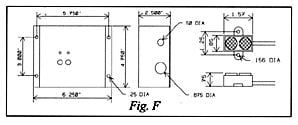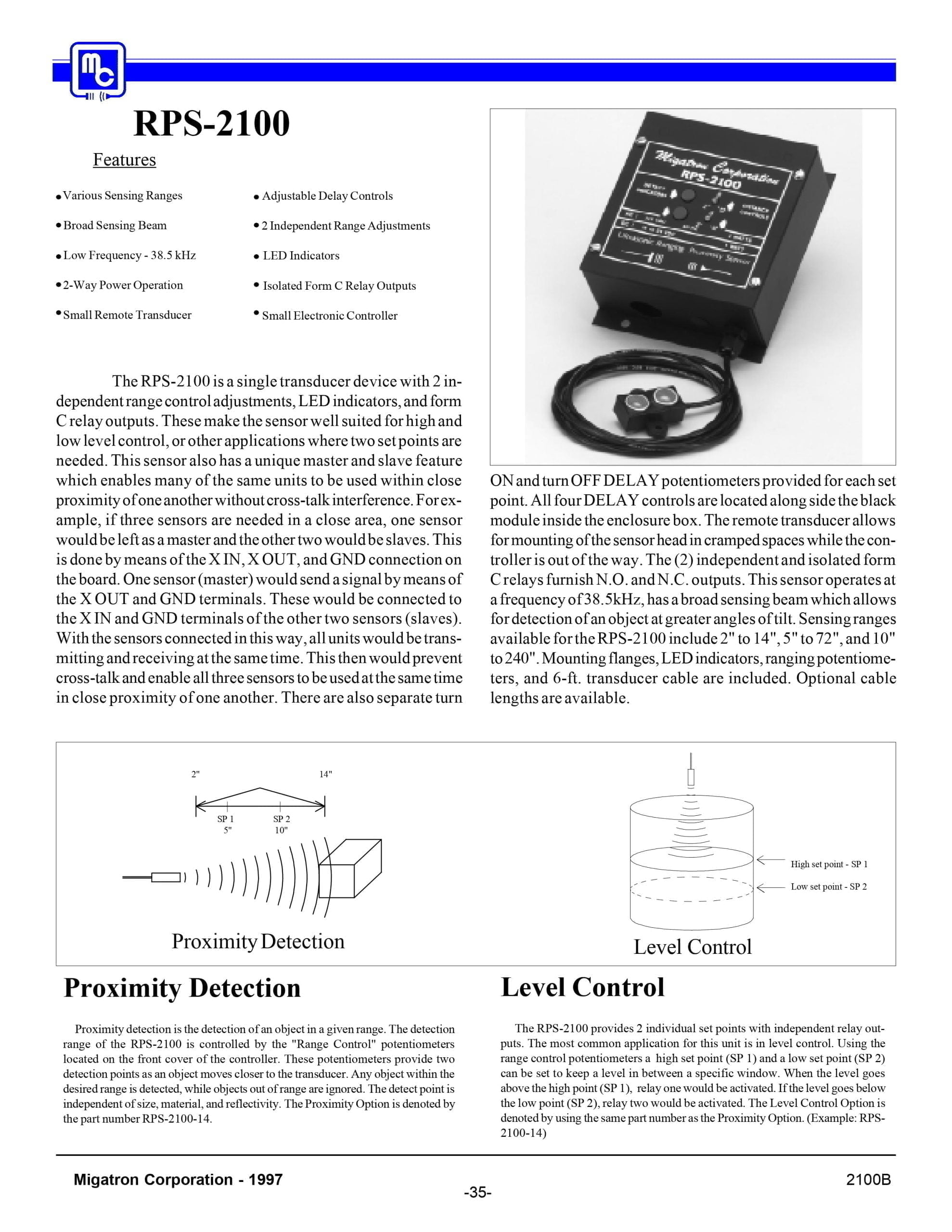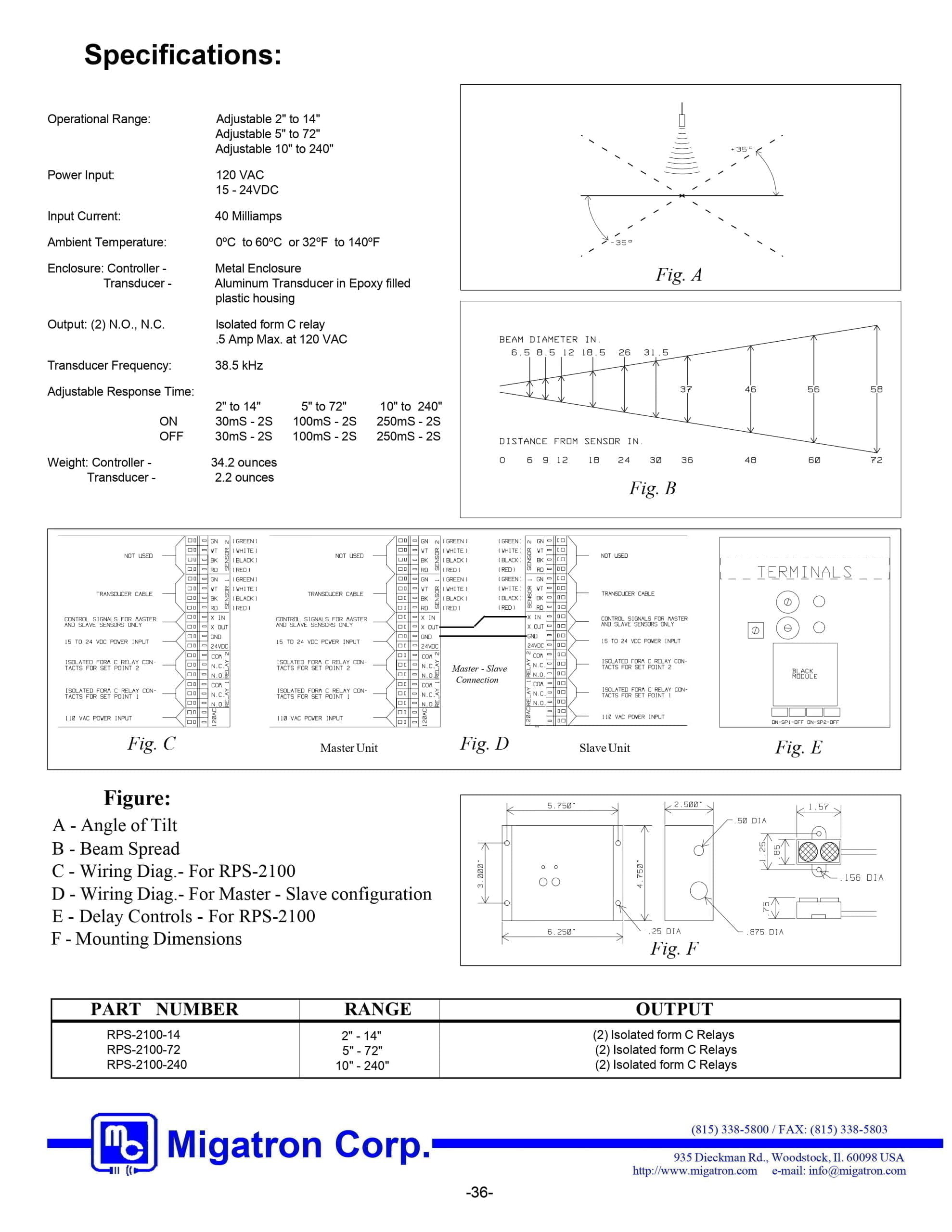Description
The RPS-2100 is a single transducer device with 2 independent range control adjustments, LED indicators, and form C relay outputs. These make the sensor well suited for high and low level control, or other applications where two set points are needed. This sensor also has a unique master and slave feature which enables many of the same units to be used within close proximity of one another without cross-talk interference. For example, if three sensors are needed in a close area, one sensor would be left as a master and the other two would be slaves. This is done by means of the X IN, X OUT, and GND connection on the board. One sensor (master) would send a signal by means of the X OUT and GND terminals. These would be connected to the X IN and GND terminals of the other two sensors (slaves). With the sensors connected in this way, all units would be transmitting and receiving at the same time. This then would prevent cross-talk and enable all three sensors to be used at the same time in close proximity of one another.
There are also separate turn ON and turn OFF DELAY potentiometers provided for each set point. All four DELAY controls are located along side the black module inside the enclosure box. The remote transducer allows for mounting of the sensor head in cramped spaces while the controller is out of the way. The (2) independent and isolated form C relays furnish N.O. and N.C. outputs. This sensor operates at a frequency of 38.5kHz, has a broad sensing beam which allows for detection of an object at greater angles of tilt. Sensing ranges available for the RPS-2100 include 2″ to 14″, 5″ to 72″, and 10″ to 240″. Mounting flanges, LED indicators, ranging potentiometers, and 6-ft. transducer cable are included. Optional cable lengths are available.

Proximity Detection
Proximity detection is the detection of an object in a given range. The detection range of the RPS-2100 is controlled by the “Range Control” potentiometer located on the front cover of the controller. Any object within the desired range is detected, while objects out of range are ignored. The detect point is independent of size, material, and reflectivity. The Proximity Option is denoted byt the part number RPS-2100-14.
Level Control
The RPS-2100 provides 2 individual set points with independent relay outputs. The most common application for this unit is in level control. Using the range control potentiometers a high set point (SP 1) and a low set point (SP 2) can be set to keep a level in between a specific window. When the level goes above the high point (SP 1), relay one would be activated. If the level goes below the low point (SP 2), relay two would be activated. The Level Control Option is denoted by using the same part number as the Proximity Option. (Example: RPS-2100-14)

